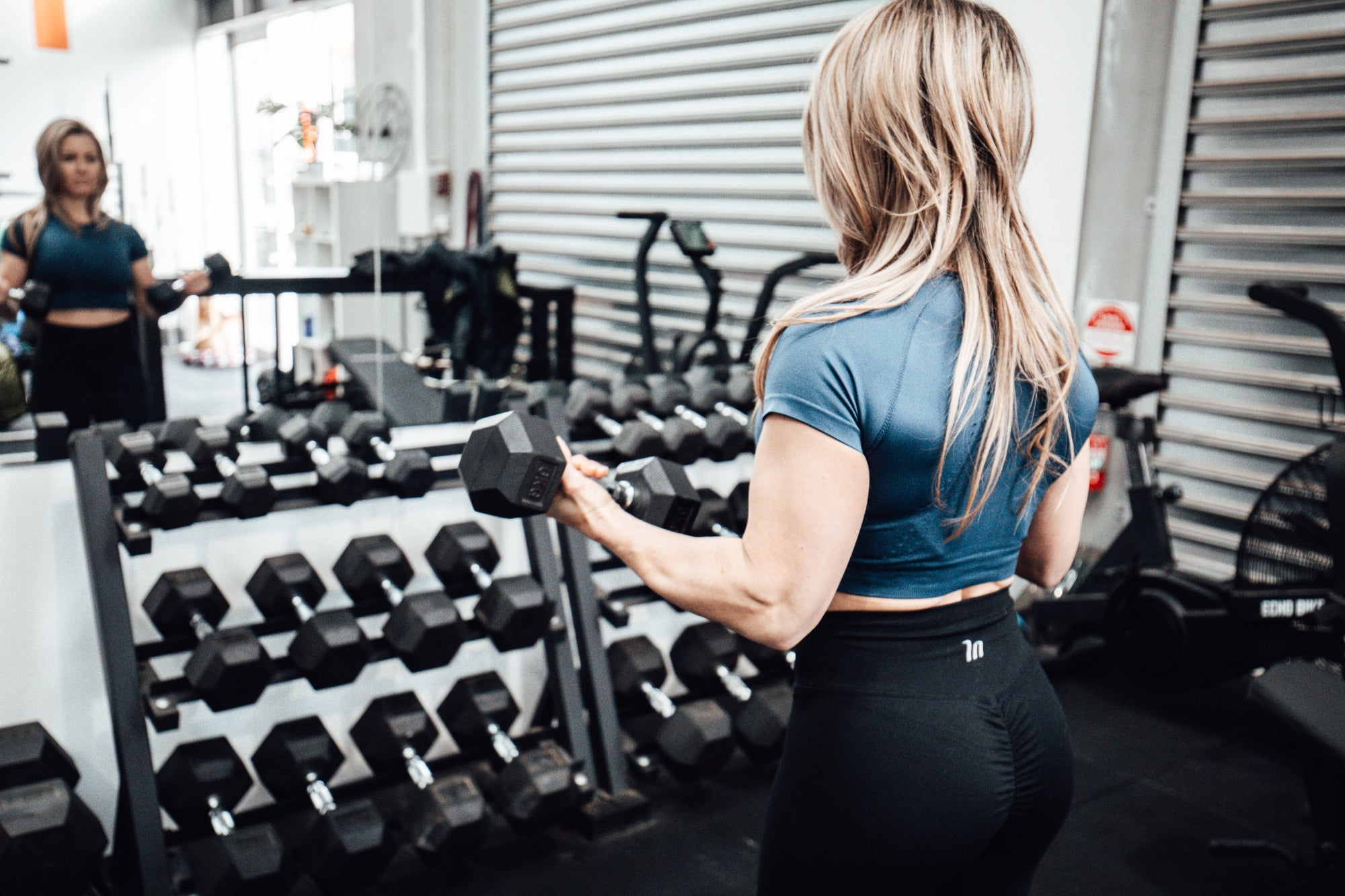
Your free ultimate workout & nutrition guide
Whether you're toning up or dropping a dress size, our Ultimate Workout & Nutrition Guide is what YOU need! With everything you need to know, including full meal and workout programs for all levels, it's your one stop shop to getting the body you want!
Fill in your email below to download your free nutrition and training guide:
Here's What You Get
Whether you're toning up, working-out from home or hitting the gym we've got everything YOU need! Grab your workout, nutrition, supplements guide and more in a single FREE download!
Whether you're toning up, working-out from home or hitting the gym we've got everything YOU need! Grab your workout, nutrition, supplements guide and more in a single FREE download!
-
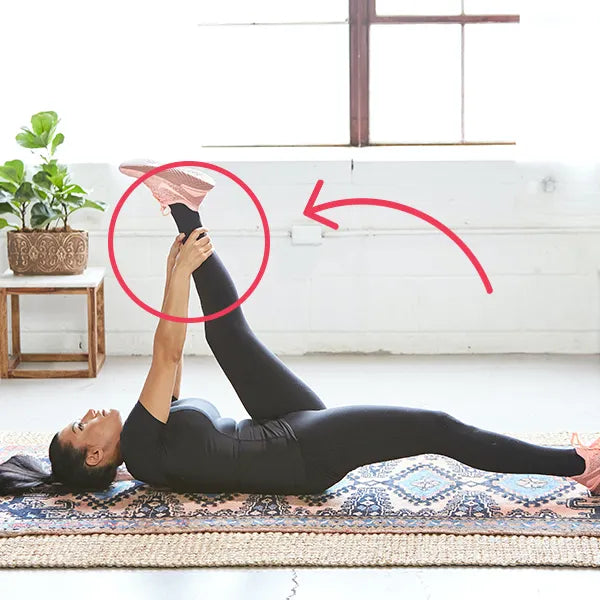
Tips, Tricks and More
Expert tips, secrets and more from our team on how they stay in shape.
-

Free Exercise Plan
Full 7 day Workout Program designed by the our expert trainers.
-
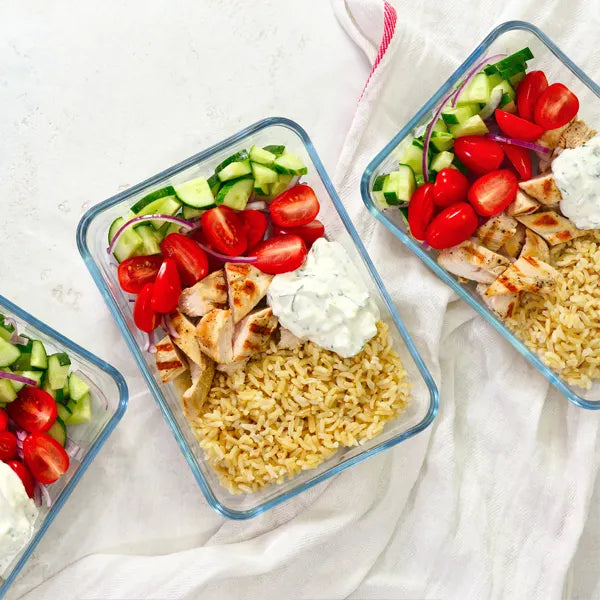
Free Nutrition Plan
Know what to eat and when to eat it and how much you need to reach your fitness goals.
-

Supplement Guide
Find out what supplements work, when to take them and what works best.
-
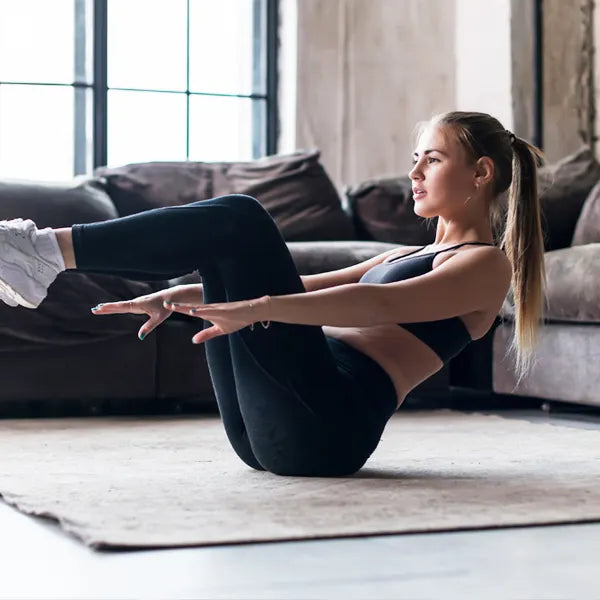
Home Workouts
No gym? No problem! We've included both gym and home workout plans for you.
-
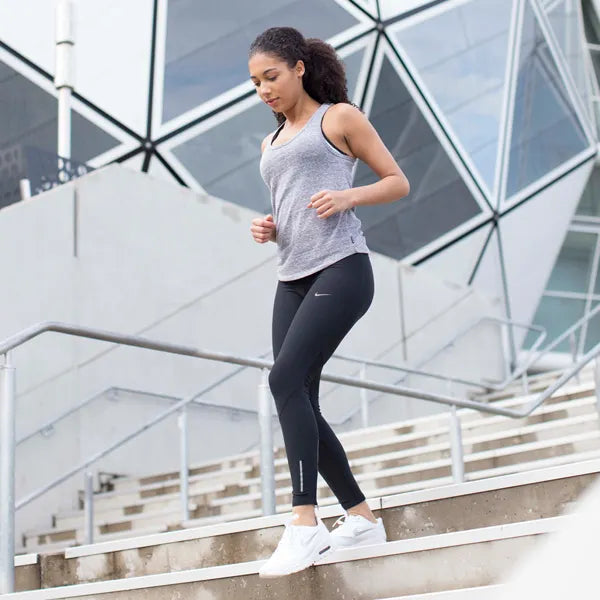
Free Weight Loss Guide
Have you tried diet after diet and still get the same result? Try something different!
-
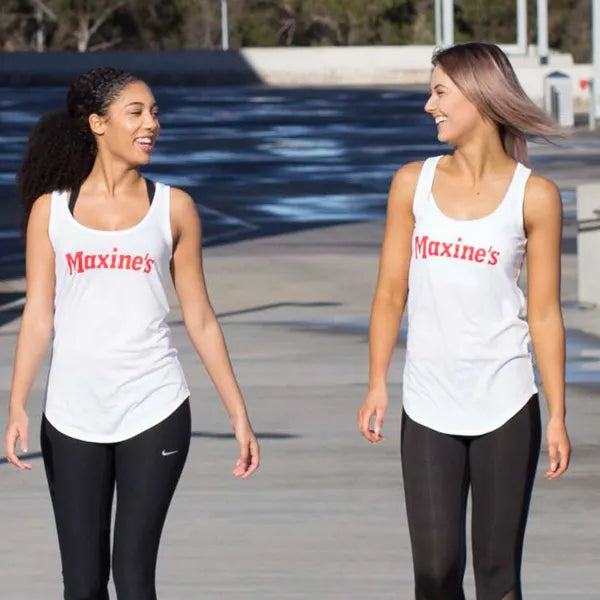
Look & Feel Young Guide
Find out how to look 20 years younger and get in the shape of your life!
-
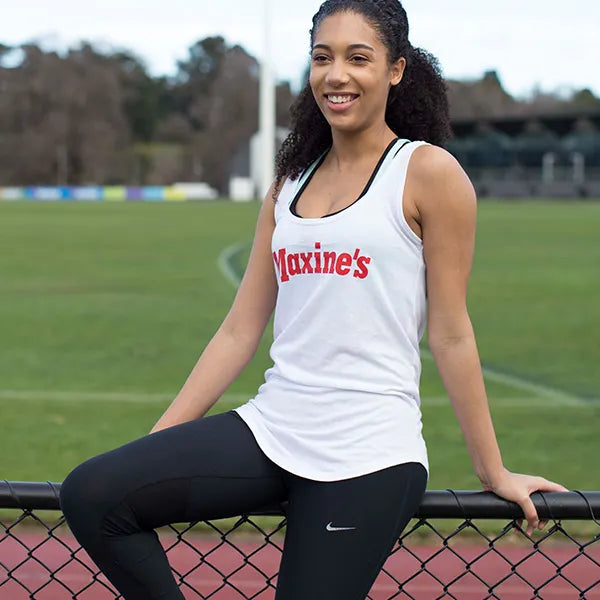
New Mum Guide
Want to get your body back after giving birth? Get our free guide to bouncing back!
Choose Your Workout Level
When starting out on any workout program it’s important to start off in the right way. In this section we will run you through the basics of training. We then have 2 different options to get you started:
When starting out on any workout program it’s important to start off in the right way. In this section we will run you through the basics of training. We then have 2 different options to get you started:
-
Beginner
3 Days Per Week Whole Body Routine
This program is designed for trainers who are just starting out and who haven’t done much gym training before. It is designed to build a strong base over several months before stepping up to a more intense training program. Use this program if you are new to training or haven’t done any weight training for 12 months or more. -
Advanced
4-6 Days Per Week Split Body Routine
This program is designed for trainers who have already been gym training for a while or who have reasonable experience with weight training, what we would term as an intermediate level trainer. Use this program if you are currently weight training on a regular basis, or you have a reasonable amount of weight training experience.
Choose Your Nutrition Goal
When starting out on any workout program it’s important to start off in the right way. In this section we will run you through the basics of training. We then have 2 different options to get you started:
When starting out on any workout program it’s important to start off in the right way. In this section we will run you through the basics of training. We then have 2 different options to get you started:
-
Toned & Shaped
Lose Body Fat While Adding Shape
Getting in great shape is not something you can do in a few weeks. In fact getting in great shape and staying that way is more about adopting positive lifestyle changes rather than going on a diet or joining a gym. If you are looking for a sustainable and easy to follow plan that will help you lose fat and tone up this is the plan for you! -
Fit & Strong
Gain Lean Muscle & Improve Strength
Getting lean and strong is often the goal of women that have been training for some time who are carrying some body fat. Your main goal should be to build or maintain lean muscle while stripping fat. And we'll show you exactly how to do that. We recommend you follow this plan for a minimum of 6 weeks and you should start seeing excellent results!
Free Weight Loss Guide Included
6 Tips to Losing Weight & Staying Fit
6 Tips to Losing Weight & Staying Fit
-

Reduce Carbs & Sugar
Sugar and starches feed the gut bacteria that tend to have a negative effect on your health.
-

Reduce or Eliminate Gluten
What actually is it? Well it's a general term that describes a class of protein usually found in grains like wheat and barley.
-

Eat More Veggies
Veggies, particularly highly fibrous veggies like cabbage, broccoli, onions, string beans, squash, zucchini, lettuce, kale...
-
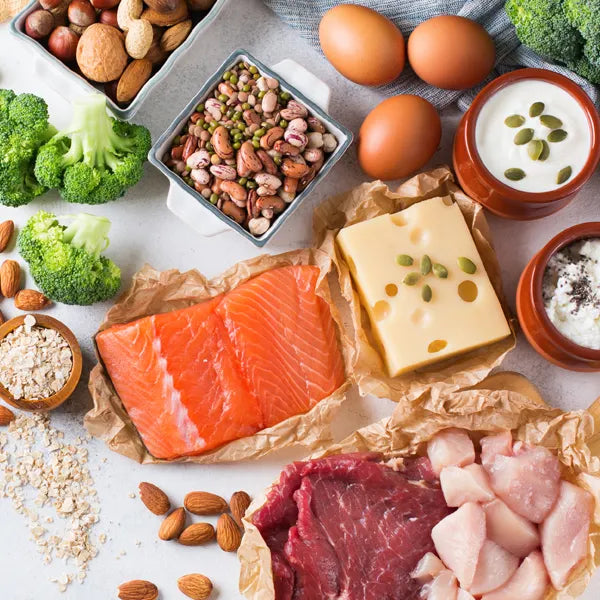
High Quality Protein
Now if you are into training, chances are you are already doing this. But when we say high quality, what do we mean?
-
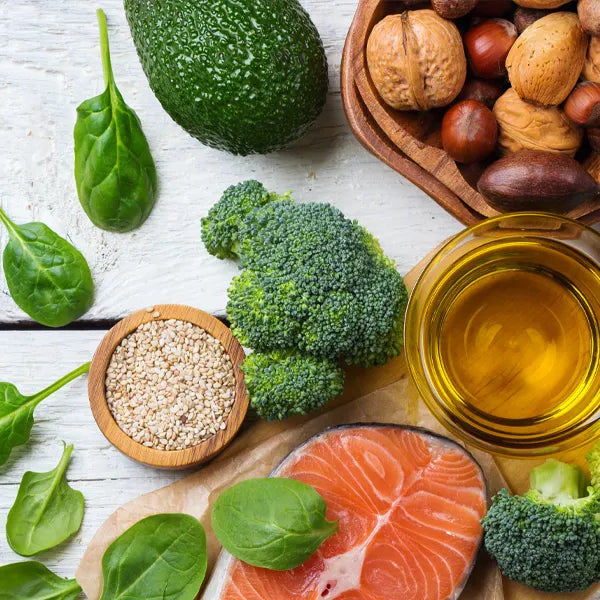
More Healthy Fats
Cutting back your sugar and carb intake to improve gut health, what do you replace them with? Your choices are protein or fats.
-
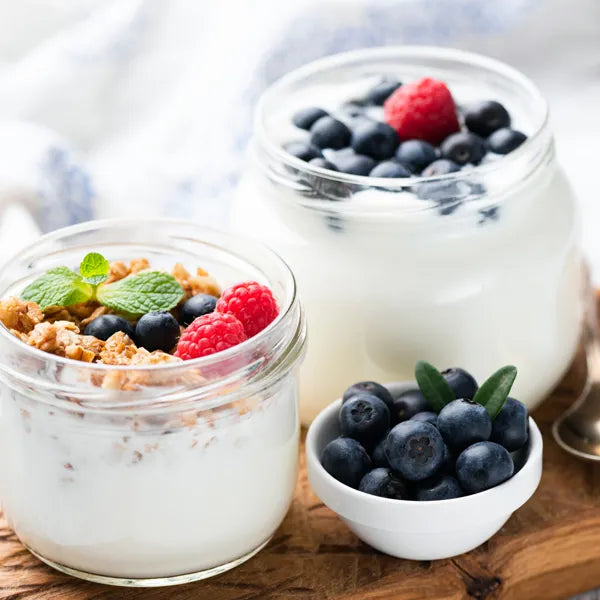
Probiotics & Fermented Foods
Probiotics are popping up in lots of different foods these days. A great source of probiotics is yogurt. However there are lots of other sources.
Workouts for Women: Everything You Need To Know
Getting Started
When getting started with an exercise or fitness program there are a few things to consider:
- Consult your doctor – whenever you begin an exercise program is it wise to consult your doctor to evaluate your fitness level and overall health, and get clearance to proceed or an understanding how much you are able to do.
- Set goals – make sure they are clear, realistic and measurable. It’s always a good idea to start small and build on them as you progress.
- Start slowly – if you try to go all out straight away you are more likely to burn out, get injured, and lose motivation as a result. Aim to form habits that you can stick with for a lifetime, rather than chasing immediate results.
- Choose the right gym – choose one you feel comfortable in, especially in the free weight’s section. Ensure it is within reasonable distance to either home or work. If it’s too far away it will be harder to find motivation to go.
- Warm up – cold muscles are more prone to injury than are warm muscles. Try brisk walking or another aerobic activity for 5 or 10 minutes, or 1-2 light sets of an exercise for the muscles you are about to train.
- Have a plan – know what you are going to do before getting there so you can get started straight away and keep moving. Be flexible with your program too. If the equipment or machine you want is being used either come back to it or have an alternative exercise in mind.
- Learn proper technique – if you are new to weight training, work with a trainer or other fitness specialist to learn correct form and technique. Even experienced athletes may need to brush up on their form from time to time. This is very important to avoid injury.
As you progress in your training program there are some additional safety tips and pointers to be aware of:
- Get a spotter – if you are attempting a heavy or big lift (such as bench press or squat) get someone to spot you just to be safe.
- Breathe – don’t forget to breathe during your exercises. It’s common to sometimes hold your breath when concentrating so be conscious to keep breathing throughout the movement.
- Proper technique – not just during the movement, but when picking up and putting down weights, or loading and unloading machines or barbells. You can just as easily get injured doing this as performing the actual exercise.
- Engage your core – you should switch on or engage your abs/core when performing moves, especially things like squats, shoulder press and deadlifts. This helps stabilise your torso and avoids putting strain on your back and causing injury.
- Range of motion – always perform exercises with good range of motion, but be careful not to overstretch your joints.
- Stop if you feel dizzy – if you start to feel faint or dizzy, or something is hurting, stop what you are doing immediately.
Weights
Weight training is a type of strength training that uses weights for resistance. Your body is very clever. If you always keep doing the things you always do, your body will stay the same as it is. If you apply some type of stimulus over and above what your body can normally handle it will attempt to adapt by improving its capabilities like strength and endurance. Weight training provides a stress to the muscles that causes them to adapt and get stronger, similar to the way aerobic conditioning strengthens your heart. Weight training can be performed with free weights, such as barbells and dumbbells, or by using weight machines. You can also increase your strength through other types of resistance exercises, such as by using your body weight or resistance bands.
Benefits of Weight Training
Many women worry that weight training will cause them to get bigger or look bulky, but nothing could be further from the truth! Women simply do not have the necessary levels of testosterone in their body to gain muscle the same way as men. Instead, along with toning and shaping your body, the benefits of weight training include:
- Improves your metabolism – muscle actually burns kilojoules/calories even when at rest. So the more muscle you have, the more kilojoules your body burns even when you are just sitting around and as you sleep, and therefore the more body fat you will lose.
- Prevent Osteoporosis- it helps maintain bone density and protect women against conditions such as Osteoporisis which is common in women later in life.
- Improves co-ordination and balance – which also helps prevent injuries.
- Improves circulation – keeps your muscles and joints strong and supple, which keeps you looks and feeling young.
- Makes you stronger – increases muscular endurance and makes it easier to do everyday tasks.
- Shapes your body – you can change and build nice shape to your body, targeting areas of concern or preference.
- Improves confidence and self-esteem – both in how your body looks and how strong you feel.
Stripping Body Fat
Women used to think cardio was the quickest and most efficient way to burn fat, but these days gyms have just as many women training as men. That is because sports science shows that a combination of hard weight training and regular cardio is the best way to stimulate your metabolism and burn maximum fat. You can lose weight by simply going on a diet, or doing excessive and exclusive amounts of cardio. In fact, many women who start out on an exercise program often stick to cardio exercise because they believe it is the best way to condition their body. If you do this long enough you can get pretty skinny, but this will cause a loss of muscle in addition to body fat, and will result in a weak shapeless body.
The better approach is to lose fat while maintaining and even building on the muscle you do have, via weight training. You will look better, feel fitter and stronger, and have more energy for training, sport and everyday life in general. As mentioned previously, the more lean muscle you have, the better your metabolism and the more calories your body will burn. It also means you will be able to consume more calories because your body is burning them off at a greater rate. Which is a much better result than simply dieting and calorie restriction. Weight training and cardio, combined with a nutritious high protein diet, can dramatically transform how you look and feel, and build a nice lean physique.
Weight Training Principles
As mentioned, your body will stop changing if you don’t change or progress your workouts. The below are some basic strength training principles that will help you both set up your training program and ensure you are progressing in your workouts correctly.
Training frequency and duration
- Beginners should aim for 3 weight training sessions of around 45-60 minutes, and 1-2 cardio sessions per week.
- Intermediate trainers should aim for 4 weight training sessions of around 1 hour each, and 3-4 cardio sessions per week.
Sets and Repetitions
- We recommend using around 10-12 repetitions in each exercise set.
- Beginners should start with 1 exercise for each body part and perform 3-4 sets each.
- As you progress and gain experience, and for intermediate trainers, you can progress to 3-4 exercises per body part and perform 3-4 sets each.
Rest
- When starting out you should aim to have 1-2 minutes rest between sets.
- As you progress and for those who are more experienced, keep a shorter rest time to keep your heart rate up and burning fat.
- When training legs always rest slightly longer to ensure you are able to perform each set with maximum intensity.
Recovery
- You must train hard to stimulate change but you must give your body enough time between workouts to recover. This is usually between 48 – 72 hours but can take longer for beginner trainers.
- You should always have a protein shake straight after your workout; stretching and light cardio is a great method to relax stiff muscles and speed up recovery; and ensure you get plenty of sleep at night.
Overload and Progression
- In order to avoid plateaus and keep your body benefiting from the training, you need to always strive to increase your intensity. This can be done by:
Positive failure
- Your body will only change when you push it beyond its normal limits. Your last few repetitions of the last 1 – 2 sets should be to failure.
- Don’t push too hard straight away. Build up slowly so you don’t burn out or risk hurting yourself.
Training Priorities
- If you have a weaker body part start off your workout with that body part to ensure you attack it while you are freshest.
Negative Failure
- Intermediate level trainers can start introducing negative failure into their training.
- This is done by having a training partner help you push out a few more reps after you cannot do any more on your own, by gently helping to lift the bar, with just enough pressure that you are doing 95% or the work.
- Two sets of forced reps like this can really push your muscle beyond their normal capabilities and stimulate good gains.
- Don’t do this in every workout though as it can quickly lead to overtraining. Once per week or so is plenty.
Cardio
Your heart is a muscle and therefore you need to work it to make it stronger just like anything else. Cardiovascular exercise, or ‘cardio’ for short, is any activity that raises your heart rate and respiration while using large muscle groups repetitively and rhythmically. By providing training that progressively challenges your most vital internal life support network, cardio can improve both the function and the performance of your heart, lungs and circulatory system. It is also beneficial in fat loss and getting in shape.
Types of Cardio
Cardio can generally be categorised into two main types – HIIT (High Intensity Interval Training) and LISS (Low Intensity Steady State). Both are very different, offer different results and have different roles to play in your fitness and fat loss efforts.
HIIT (High Intensity Interval Training)
HIIT provides an intensive aerobic option which takes a fraction of the time to complete compared to the more traditional cardio methods. 15 minutes may seem too good to be true to lose weight, but it is not. However, you must keep in mind this is no walk in the park. HIIT is very demanding, but extremely rewarding and time-saving. It incorporates both high intensity aerobic work with a very high intensity component to provide a maximal fat burning effect, and an increased metabolic rate that can last for over 24 hours after training. Due to this is has been proven in many studies to be more effective in burning body fat than traditional, less intense, cardio. Other benefits include:
- Raises fat burning hormones and metabolism.
- Raises the metabolic rate more so than other methods of cardio.
- Can be performed on many different exercise machines, as well as outside or in a swimming pool.
A beginner example of HIIT: Cycling, 10 minutes
- Interval One: 30 Seconds at 50 Percent intensity
- Interval Two: 15 Seconds at 90 Percent intensity
- Interval Three: 30 Seconds at 50 Percent intensity
- Interval Four: 20 Seconds at 95 percent intensity
- Interval Five: 30 Seconds at 50 Percent intensity
- Interval Six: 20 Seconds at 100 Percent intensity
- Interval Seven: 1 Minute at 50 Percent intensity
- Interval Eight: 30 Seconds at 100 Percent intensity
An intermediate example of HIIT: Sprinting, 16 minutes
- Interval One: 20 Seconds Sprints done at 100 percent maximum intensity
- Interval Two: 40 Seconds light jog at 50 percent intensity
- Interval three: 30 Seconds sprints done at 100 percent maximum intensity
- Interval Four: 1 minute light jog at 50 percent intensity
- Interval five: 30 seconds sprints done at 100 percent maximum intensity
- Interval Six: 1 minute light jog at 50 percent intensity
- Interval Seven: 45 Seconds sprint at 100 percent maximum intensity
- Interval eight: 45 seconds light jog at 50 percent intensity
- Interval nine: 1 Minute sprints done at 90 percent intensity
- Interval Ten: 1 minute light jog at 50 percent intensity
LISS (Low Intensity Steady State Cardio)
LISS is the opposite of HIIT in that it is performed at a constant steady pace for between 30-60mins, often with a target heart rate zone (intensity) of between 50-65% of maximum heart rate. While the benefits may not be the same as HIIT, it does have benefits and a place in your cardio and exercise routine. Around 45 to 60 minutes of LISS can help the body become conditioned over time to use fat as a fuel source better in your next workout. In addition:
- It’s great for those who haven’t exercised for some time to help build up your fitness.
- It doesn’t place strain on your body and therefore has low risk of injury.
- As recovery is quicker than other high intensity you can do it more often.
- It’s great for active recovery or rest days.
- It’s easier and more beneficial to do if you are sore after a few hard training sessions.
Having a combination of HIIT and LISS is best for maximum fitness and fat loss results. Doing LISS alone can start to break down your muscles as a source of fuel, so you will lean out but lose strength and slow your metabolism down. Also, as your body adapts over time if you only do LISS you will miss out on the adaptations that come with higher intensity bouts of cardio. However, as HIIT is more physically and psychologically taxing, only doing HIIT could lead to greater risk if injury and impact on recovery. So a combination is recommended.
Cardio Methods and Their Benefits
There are many different methods of cardio, and each with varying benefits.
- Walking – burns 300-400 calories per hour. Walking is the least effective form of exercise for losing weight and achieving fitness, as it only raises the metabolism for 1-2 hours afterwards. However, benefits do include:
- Running – burns around 600 calories per hour. Although running is high impact it is an efficient way to lose body fat and improve cardiorespiratory fitness. Benefits include:
- Cycling – burns around 600 calories per hour. Cycling involves the same muscles as running, but is lower impact which makes it ideal for almost anyone except those with certain injuries. Benefits include:
- Rowing – burns around 840 calories per hour. Rowing is considered the perfect exercise because it works all the main muscles of the body, making it a total body workout. Other benefits include:
- Swimming – burns around 600 calories per hour. Swimming is similar to rowing in that it provides a great full body workout. Benefits include:
- Skipping – burns over 1000 calories per hour. While one of the harder cardio exercises and very high impact, skipping can provide a great aerobic workout if done correctly. Skipping burns a higher number of calories per hour than rowing or any other method, however it is best used for shorter periods as it might lead to impact injuries of the lower leg or hip if done continuously for too long. Benefits include:
Cross Training
Circuit training is a method of resistance or weight training, based around performing a set number of exercises in a row, with little or no rest between each. The most important component of circuit training is to take little rest in between sets, whether of the same or different exercises, thereby maximising the volume of work done in a short period of time. You can set up as many or as few stations as you like, vary the exercises and body parts as you want, and can make the circuit time as long or short as you wish. As circuit training is a type of interval training it is a great way to increase the body’s ability to burn calories when it is at rest. Circuit training, and interval training overall, increases the amount of oxygen that a person consumes post exercise, and therefore, increases the number of calories that a person burns throughout the day, which can result in a decrease in body weight.
Benefits of Circuit Training
- Time efficient – you can get an effective full body workout in a relatively short amount of time.
- Cardio & strength – if you enjoy cardio but know you should do weight training (or visa versa) you can combine them so you don’t have to suffer through a session of the non-preferred.
- Beat the boredom – because you are constantly moving constantly and doing different things each time you are less likely to get bored.
- Burn fat – The combination of HIIT and weight lifting kicks your metabolism into high gear burning more calories both during the workout and for up to 48 hours after.
- You don’t need a gym – you can choose exercises that use weights or equipment, or you can simply use body-weight exercises, meaning you can do it anywhere (park, backyard etc).
How to Build a Workout
- Selected your time limit – eg. 6 stations/exercises, 1 minute for each exercise, repeat for 5 circuits equals 30 minutes.
- Choose your exercises – you can choose a different exercise each round or repeat the same exercises each time.
- Rest for 1 full minute at the end of the round and repeat 4 more times.
If you are starting out you choose alter the 1 minute exercise time to be 45 seconds work/15 seconds rest. Your heart rate will go up very high, return to a lower but still elevated state, and then goes up very high again. At no point during the round does your heart rate return to its resting rate, so this type of variation in time will still be just as effective.
Core
Yoga and Pilates are two of the most popular forms of body-mind exercise today. Both Yoga and Pilates methods emphasize the uniform development of all muscle groups while promoting flexibility, circulation and skeletal alignment.
Yoga
Yoga cultivates health and well-being (physical, emotional, mental and social) through the regular practice of a range of many different techniques, including postures and movement, breath awareness and breathing exercises, relaxation and concentration, self-inquiry and meditation. Researchers have discovered that the regular practice of Yoga may produce many health benefits, including increased fitness and normalisation of blood pressure, and is a renowned antidote to stress.
Pilates
Pilates emphasizes your body’s core. It uses correct alignment, centering, concentration, control, precision, breathing, and flowing movement (the Pilates principles) to establish a perfect working body from the inside out. Pilates moves require you to engage virtually your whole body. The discipline emphasizes correct form instead of going for the burn and the moves take a lot of concentration.
The Difference between Yoga and Pilates
While both practices do have some similarities. They both place an importance on strength and suppleness in the spine. However once you look past the surface it is apparent that they are two very different systems. Perhaps the main difference is that Yoga is made up of a series of static postures, while Pilates is based on putting yourself into unstable postures and challenging your body by moving your limbs.
Both Yoga and Pilates encourage mindful movement and incorporate effective breathing as an integral part of the exercise. In Yoga breathing is done in and out through the nose whilst in Pilates you breathe in through the nose and out through the mouth.
Both practices emphasize breathing from the core of the body but Pilates seems to have a greater emphasis on this in the initial stages whereas in Yoga these techniques are usually brought about after you are competent in the basic postures (depending on your teacher).
In Yoga there are many different types of breathing patterns and related exercises (Pranayama) to be done during postures or as a separate practice. In Pilates there is only one type of breathing and it is always done with the exercise and never in isolation.
Yoga postures are generally static, meaning you get into the pose, hold it for several breath cycles and then you get out of the pose. Pilates exercises, meanwhile, are constantly moving and you would usually perform five to 10 repetitions of an exercise before proceeding to the next.
In a Pilates class most of the work is done lying on the mat with the main emphasis on strengthening the core of the body with little regard to the limbs. Pilates classes can also incorporate apparatuses to enhance the exercises. In Yoga you are exposed to a wider range of movements creating an overall practice and conditioning routine. In some yoga classes you will occasionally use basic props to help assist you in some poses but these are not always common place (it depends on the teacher and style).
Benefits of Yoga
The health benefits of yoga include:
- Increased flexibility
- Increased muscle strength and tone
- Improved respiration, energy and vitality
- Improved posture
- Improved digestive system
- Assist in weight reduction
- Cardio and circulatory health
- Improved athletic performance
- Protection from injury
- Creates mental clarity, centres attention and sharpens concentration
- Relaxes the mind and creates calmness
- Increases body awareness
- Relieves chronic stress patterns
Benefits of Pilates
The health benefits of Pilates include:
- Improved flexibility
- Increased muscle strength and tone
- Balanced muscular strength on both sides of your body
- Enhanced muscular control of your back and limbs
- Improved stabilisation of your spine
- Improved posture
- Rehabilitation or prevention of injuries related to muscle imbalances
- Improved physical coordination and balance
- Safe rehabilitation of joint and spinal injuries
- Prevention of musculoskeletal injuries
- Increased lung capacity and circulation through deep breathing
- Improved concentration
- Increased body awareness
- Stress management and relaxation













